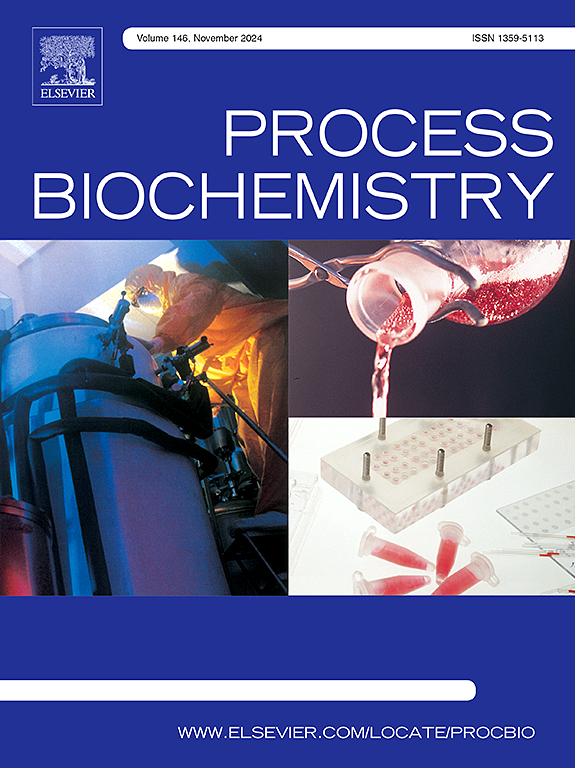槲皮素-表没食子儿茶素没食子酸酯纳米线合成的抗溶剂和乳化工艺对比分析:表征及其生物医学应用
IF 3.7
3区 生物学
Q2 BIOCHEMISTRY & MOLECULAR BIOLOGY
引用次数: 0
摘要
本研究以槲皮素(QT)和表没食子儿茶素没食子酸酯(EGCG)两种多酚的优势为基础,采用乳化法(Mix1)和抗溶剂法(Mix2)两种不同的方法合成纳米组合模型。采用透射电镜(TEM)、扫描电镜(SEM)、x射线衍射(XRD)、布鲁诺尔-埃米特-泰勒(BET)表面积分析和傅里叶变换红外光谱(FTIR)对QT、EGCG、Mix1和Mix2进行形态学研究。测定了其对伤寒沙门菌和其他9种人体致病菌的抑菌效果和最低抑菌浓度(MIC)。并对其抗氧化活性进行了评价。结果表明,两种方法均可形成纳米线。Mix1表现出团聚和粘附的颗粒,而Mix2表现出粗糙的形态。Mix1和Mix2的最大吸光度均在374 nm处。FT-IR分析证实QT和EGCG在物理上相互吸引。与原始多酚相比,Mix1和Mix2表现出增强的协同抗菌和抗氧化性能,这可能提高了它们的生物利用度。本文章由计算机程序翻译,如有差异,请以英文原文为准。
Comparative analysis of anti-solvent and emulsification techniques for the synthesis of quercetin-epigallocatechin gallate nanowires: Characterization and biomedical applications
The current study was based on the idea of accomplishing the advantages of two polyphenols, quercetin (QT) and Epigallocatechin Gallate (EGCG), by synthesizing a nano-combination model using two different methods: emulsification (Mix1) and the anti-solvent method (Mix2). Morphological studies of QT, EGCG, Mix1, and Mix2 were performed using transmission electron microscopy (TEM), scanning electron microscopy (SEM), X-ray diffraction (XRD), Brunauer-Emmett- Teller (BET) surface area analysis, and Fourier-transform infrared spectroscopy (FTIR). Antimicrobial efficacy and Minimum Inhibitory Concentration (MIC) were tested against Salmonella typhi and nine other human pathogens. Antioxidant activity was also evaluated. The results showed the formation of nanowires using both methods. Mix1 exhibited agglomerated and adhered particles, whereas Mix2 exhibited rougher morphology. Maximum absorbance for both Mix1 and Mix2 was observed at 374 nm. FT-IR analysis confirmed that QT and EGCG were physically attracted to each other. Mix1 and Mix2 exhibit enhanced synergistic antimicrobial and antioxidant properties compared with the original polyphenols, which may enhance their bioavailability.
求助全文
通过发布文献求助,成功后即可免费获取论文全文。
去求助
来源期刊

Process Biochemistry
生物-工程:化工
CiteScore
8.30
自引率
4.50%
发文量
374
审稿时长
53 days
期刊介绍:
Process Biochemistry is an application-orientated research journal devoted to reporting advances with originality and novelty, in the science and technology of the processes involving bioactive molecules and living organisms. These processes concern the production of useful metabolites or materials, or the removal of toxic compounds using tools and methods of current biology and engineering. Its main areas of interest include novel bioprocesses and enabling technologies (such as nanobiotechnology, tissue engineering, directed evolution, metabolic engineering, systems biology, and synthetic biology) applicable in food (nutraceutical), healthcare (medical, pharmaceutical, cosmetic), energy (biofuels), environmental, and biorefinery industries and their underlying biological and engineering principles.
 求助内容:
求助内容: 应助结果提醒方式:
应助结果提醒方式:


